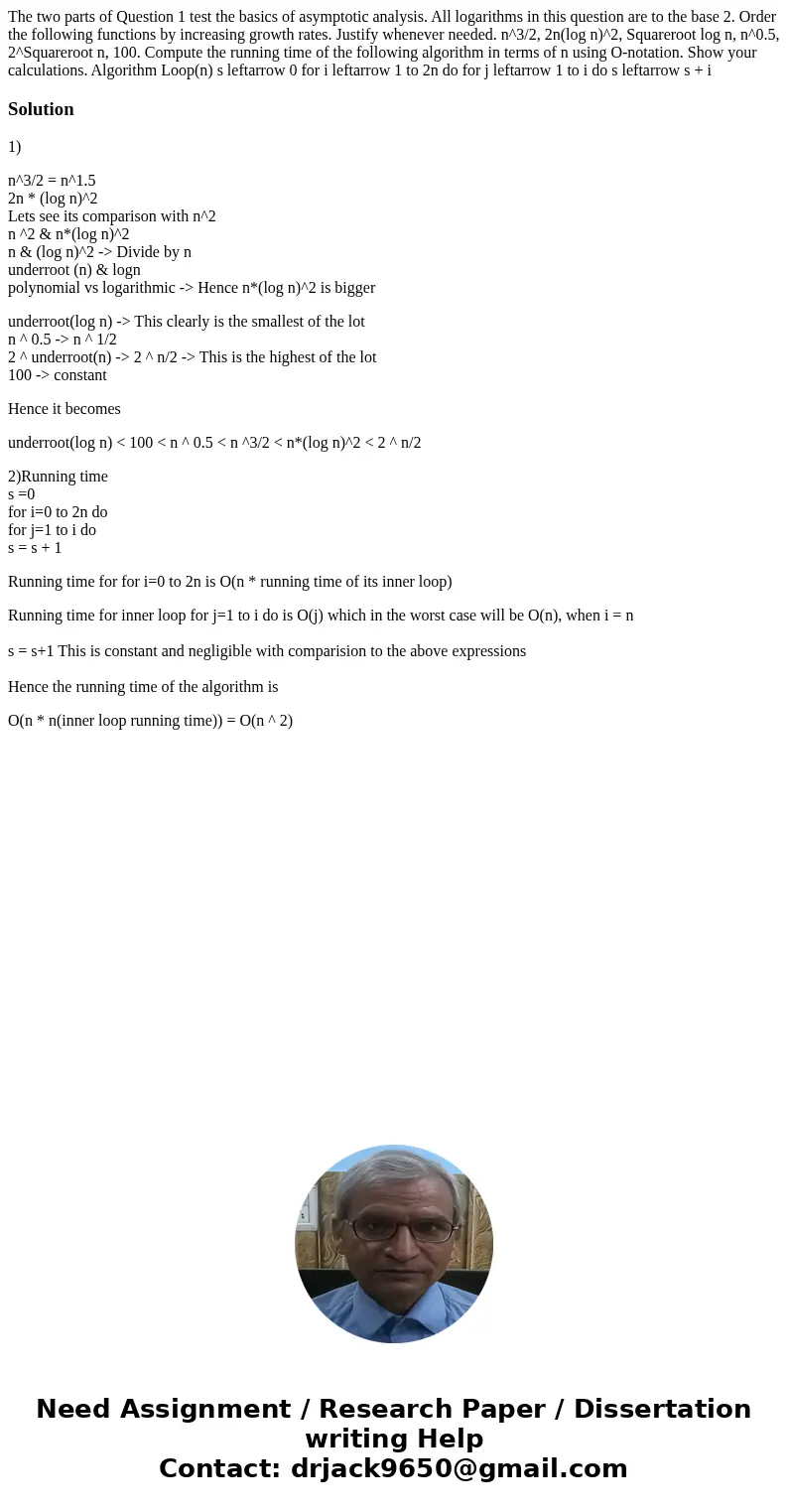The two parts of Question 1 test the basics of asymptotic an
Solution
1)
n^3/2 = n^1.5
2n * (log n)^2
Lets see its comparison with n^2
n ^2 & n*(log n)^2
n & (log n)^2 -> Divide by n
underroot (n) & logn
polynomial vs logarithmic -> Hence n*(log n)^2 is bigger
underroot(log n) -> This clearly is the smallest of the lot
n ^ 0.5 -> n ^ 1/2
2 ^ underroot(n) -> 2 ^ n/2 -> This is the highest of the lot
100 -> constant
Hence it becomes
underroot(log n) < 100 < n ^ 0.5 < n ^3/2 < n*(log n)^2 < 2 ^ n/2
2)Running time
s =0
for i=0 to 2n do
for j=1 to i do
s = s + 1
Running time for for i=0 to 2n is O(n * running time of its inner loop)
Running time for inner loop for j=1 to i do is O(j) which in the worst case will be O(n), when i = n
s = s+1 This is constant and negligible with comparision to the above expressions
Hence the running time of the algorithm is
O(n * n(inner loop running time)) = O(n ^ 2)

 Homework Sourse
Homework Sourse